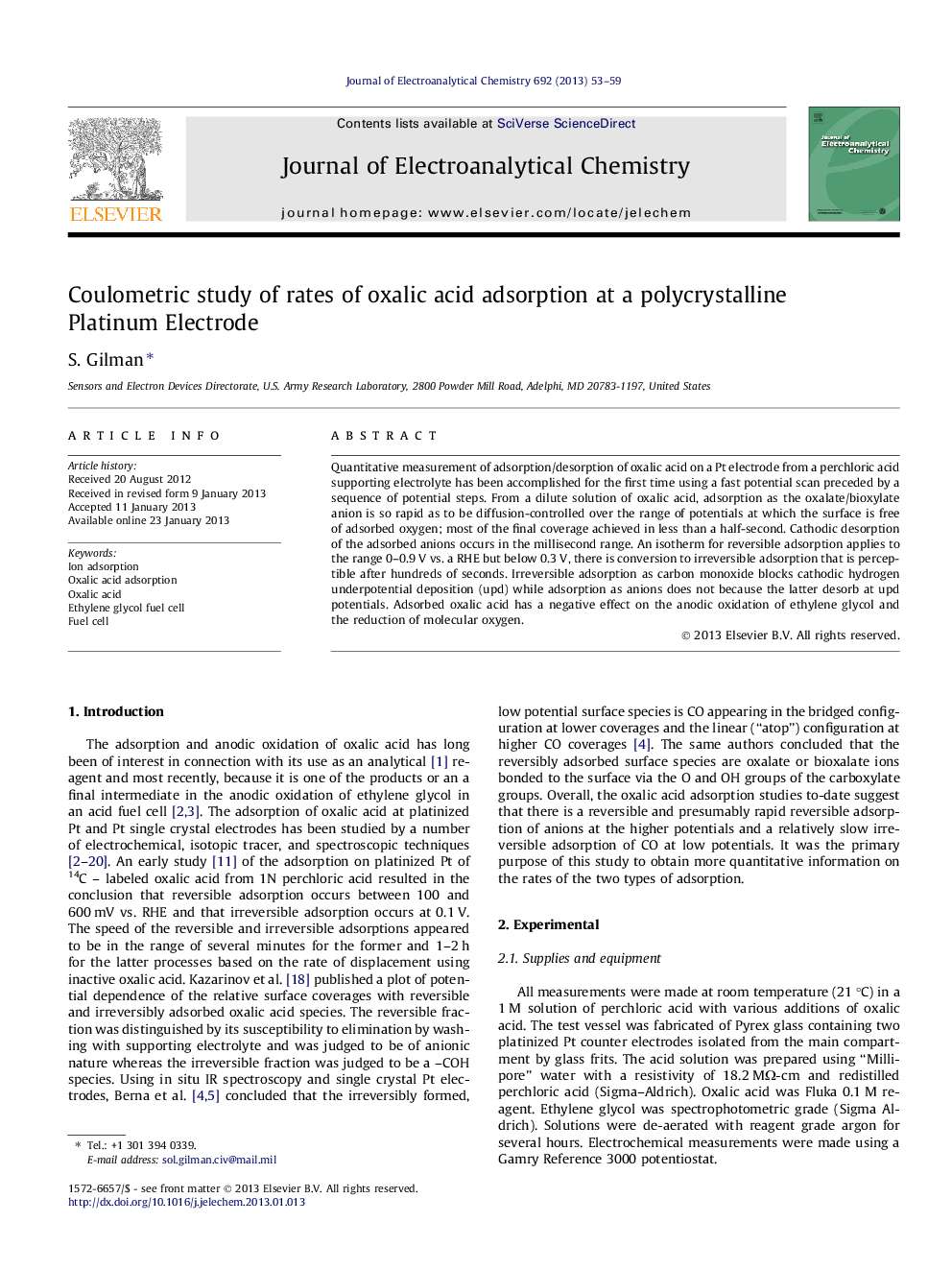| Article ID | Journal | Published Year | Pages | File Type |
|---|---|---|---|---|
| 219116 | Journal of Electroanalytical Chemistry | 2013 | 7 Pages |
Quantitative measurement of adsorption/desorption of oxalic acid on a Pt electrode from a perchloric acid supporting electrolyte has been accomplished for the first time using a fast potential scan preceded by a sequence of potential steps. From a dilute solution of oxalic acid, adsorption as the oxalate/bioxylate anion is so rapid as to be diffusion-controlled over the range of potentials at which the surface is free of adsorbed oxygen; most of the final coverage achieved in less than a half-second. Cathodic desorption of the adsorbed anions occurs in the millisecond range. An isotherm for reversible adsorption applies to the range 0–0.9 V vs. a RHE but below 0.3 V, there is conversion to irreversible adsorption that is perceptible after hundreds of seconds. Irreversible adsorption as carbon monoxide blocks cathodic hydrogen underpotential deposition (upd) while adsorption as anions does not because the latter desorb at upd potentials. Adsorbed oxalic acid has a negative effect on the anodic oxidation of ethylene glycol and the reduction of molecular oxygen.
► Coulometry enables millisecond-range measurement of adsorption rates. ► Anionic adsorption occurs over a wide range of potentials; is diffusion-controlled. ► Desorption of anions occurs within milliseconds. ► Slow and irreversible adsorption occurs in the “hydrogen region” of potentials.
